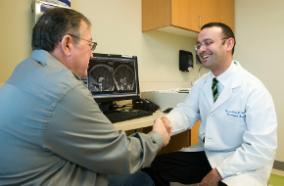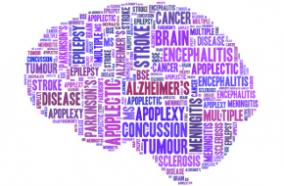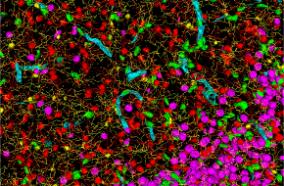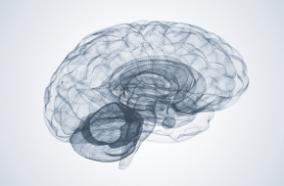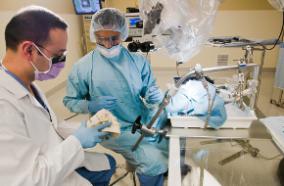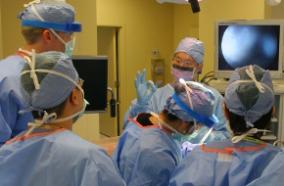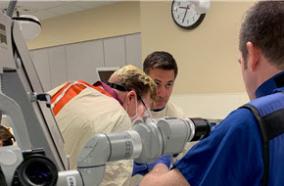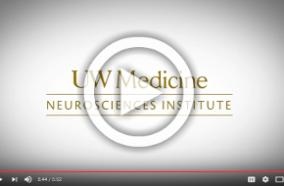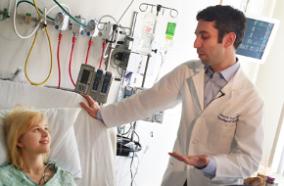Rapid Intraoperative in Situ Synthetic Cranioplasty.
Rapid Intraoperative in Situ Synthetic Cranioplasty.
World Neurosurg. 2018 Apr;112:161-165
Authors: Young CC, Hanak BW, Patel AP, Sekhar LN
Abstract
Craniectomy is a frequently performed neurosurgical procedure, and coverage of the cranial defect is necessary for protection of the underlying brain, cosmesis, and patient satisfaction. We report a new technique for intraoperative in situ synthetic cranioplasty that provides one-step resection of skull osteomas and reconstruction of cranial defects. Strategies of intraoperative cranioplasty are reviewed. A 48-year-old man who presented with a suspected benign osteoma over his forehead was offered surgical excision and primary cranioplasty in a one-step procedure using hydroxyapatite bone cement, a dural prosthetic, and a resorbable plate. Following craniectomy around the lesion, there was evidence of dural and bone involvement. The craniectomy was enlarged, and the involved dura was resected. SYNTHECEL dura repair was used to repair the dural defect and at the same time fashioned to form a receptacle for the cranioplasty by fixation of the dural substrate to the cut vertical bone edges. DirectInject hydroxyapatite bone cement was used to fill the receptacle and contoured to the curvature of the adjacent skull. A Delta resorbable plate was then placed over the bone cement and fixed to the skull. This technique provided a satisfactory cosmetic outcome following craniectomy for benign skull tumor excision. When possible, one-step surgery with primary cranioplasty should be considered.
PMID: 29409926 [PubMed - indexed for MEDLINE]

